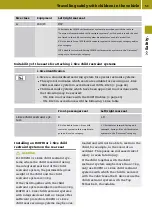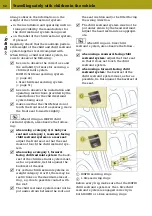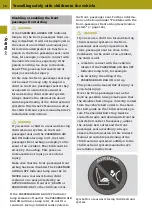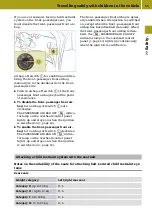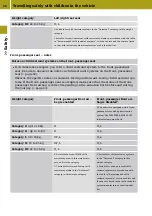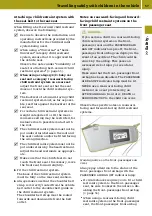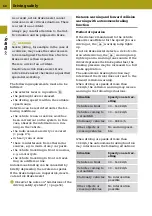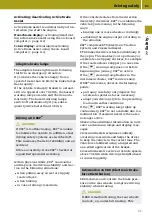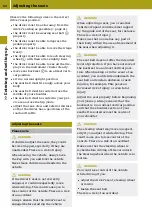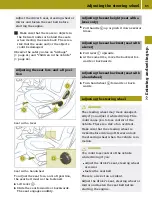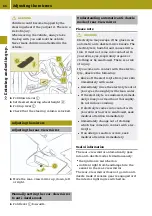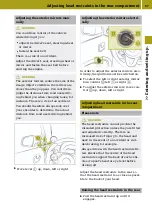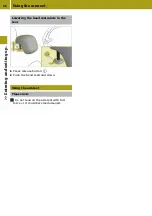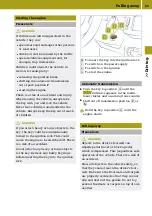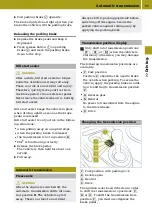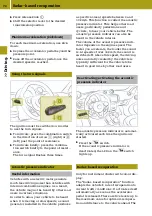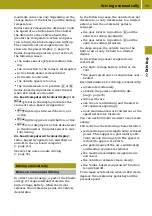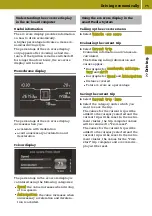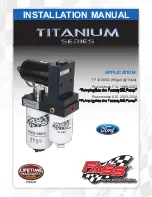
As a result, Active Brake Assist cannot
intervene in all critical situations. There
is a risk of an accident.
Always pay careful attention to the traf-
fic situation and be prepared to brake.
G
WARNING
Severe jolting, for example in the case of
a collision, may cause the radar sensors
to be misaligned. The function of Active
Brake Assist is then impaired.
There is a risk of an accident.
Deactivate Active Brake Assist. Have
Active Brake Assist checked at a qualified
specialist workshop.
The following requirements must also be
fulfilled:
R
the selector lever is in position
h
.
R
the parking brake is released.
R
the driving speed is within the suitable
speed range.
Detection can be restricted under the fol-
lowing conditions:
R
the vehicle is new or service work has
been carried out on the system. In this
case, observe the information on run-
ning-in the vehicle.
R
the radio sensors are dirty or covered
R
in heavy rain or snow.
R
there is interference from other radar
sources, e.g. in multi-storey car parks.
R
the vehicle travelling in front is narrow,
e.g. a motorcycle.
R
the vehicle travelling in front is travel-
ling on a different line.
Autonomous braking can be cancelled by
briefly depressing the accelerator pedal.
If the brake lamps are inoperative, deacti-
vate Active Brake Assist.
i
Observe the notes on "Limitations of the
driving safety systems" (
Distance warning and forward collision
warning with autonomous braking
function
Method of operation
If the distance maintained to the vehicle
ahead is insufficient for the speed you are
driving at, the
·
warning lamp lights
up.
If Active Brake Assist detects a risk of colli-
sion while driving, the
·
warning lamp
lights up and a warning tone sounds. If the
driver depresses the brake pedal fast, the
braking pressure may be increased to a full
brake application.
The autonomous braking function may
intervene if the driver does not react to the
forward collision warning.
When driving at speeds of more than
30 km/h, the collision warning may issue a
warning in the following situations:
Situation
Speed you are trav-
elling
Vehicles in front
30 - 140 km/h
Vehicles coming to
a standstill
30 - 140 km/h
Stationary vehicles
30 - 80 km/h
Other objects or
crossing vehicles
No warning possi-
ble
When driving at speeds of more than
30 km/h, the autonomous braking function
may intervene in the following situations:
Situation
Speed you are trav-
elling
Vehicles in front
30 - 140 km/h
Vehicles coming to
a standstill
30 - 140 km/h
Stationary vehicles
No intervention
possible
Other objects or
crossing vehicles
No intervention
possible
60
Driving safely
>> Safety
.






